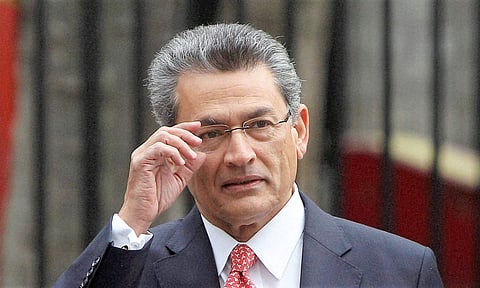

HYDERABAD: The trial and prosecution of reputed business icon Rajat Gupta in the aftermath of the 2008 US recession raised, apart from the media frenzy, pertinent questions. How did a man, known for his integrity and has donated millions of dollars to philanthropic causes, get ensnared in an insider trading case? How was he found guilty though he never sold a single share of stock in any of the companies involved or taken any payment? Was he really guilty? Or was he just the ‘fall guy’ in a bigger scheme to paint a picture to the public that the government was tough on Wall Street? Mind Without Fear by Rajat Gupta provides all the answers.
Reading the book reminds one of the 90’s Hollywood film My Cousin Vinny, where two youngsters get falsely accused of murdering a storekeeper. All they did was steal a can of tuna, and the prosecution builds an elaborate ‘case’ showing that they robbed and killed the store clerk. Had it not been for Vincent Gambini, a cocky, supremely self-confident lawyer fighting his first case in defence of the so-called accused, the youngsters might well be sentenced to life in prison. Gambini takes apart the prosecution’s testimony and makes it fall like a pack of cards. In the end, it gets revealed that two different youngsters robbed and killed the store clerk.
A quote goes, “Let a hundred guilty be acquitted, but one innocent should not be convicted.” Gupta says he is that innocent guy who gets set up by US Attorney Preet Bharara, who needed to show that he was taking a hard line on corruption without actually pursuing the tough cases against big banks.
A Harvard Business School alumnus, Rajat Gupta joined McKinsey & Company as a consultant, and eventually became the first non-American born head of the storied firm. He also served on several prominent corporate boards, including Goldman Sachs and P&G. Rajat Gupta also founded the Hyderabad-based Indian School of Business (ISB), the Public Health Foundation of India (PHFI), American India Foundation (AIF) and played a key role in the Global Fund to Fight AIDS, Tuberculosis and Malaria (GFATM), the Gates Foundation, and many more.
The case revolved around information provided about renowned investor Warren Buffett’s $5 billion investment in Goldman Sachs in September 2008 to Galleon hedge fund manager Raj Rajaratnam, who promptly bought Goldman stock before the news broke, making millions in profit. Another incident was the P&G financial results board meeting, post which Gupta called Rajaratnam.
The crux of the relationship between Gupta and Rajaratnam revolved around Voyager, a hedge fund in which Gupta invested $10 million. He later learned that his investment has been lost, and Rajaratnam begins to avoid him and his calls. This was the prime reason for the numerous calls made by Gupta to Rajaratnam, a few of which were wiretapped by the government and shown in the court as ‘evidence’ against him.
Prior to the sentencing, Gupta says he had received over 400 letters of support from luminaries such as Bill Gates, former UN Secretary-General Kofi Annan, among others.A poignant tale of Rajat Gupta’s childhood, his meteoric rise to fame, and ultimately, his fall and the prison sentence served from 2014 to 2016. The case shattered his reputation and career, built over the past four decades, while the media played the role of a ‘judge, jury and executioner’ effectively, making him look like a monster. One only wishes that had a Gambini taken over the case then, Gupta probably would have been acquitted. But destiny had other plans for him. A must read.
Pages: 342; Price: Rs 699;
Publisher: Juggernaut